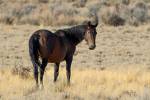How to have good water sense in and around the house
(BPT) - When you turn on the water faucet in your kitchen, do you think about the water that goes down the drain without being used in any way? Or have you wondered how you might be able to reduce your water bill? Having good water sense can help answer these questions and more.
What does it mean for homeowners to have good water sense, and why is it important? In the past 10 years, nearly all regions of the country have experienced a drought – some severe – resulting in the establishment of water-usage guidelines in various communities and states. In 2012, the last reported year, 70 percent of the United States was abnormally dry, with 20 percent of those lands under extreme drought, according to the Environmental Protection Agency.
The Environmental Protection Agency’s (EPA) WaterSense program labels home water-consuming products in order to help homeowners reduce the amount of water they use. Lowering water usage not only helps reduce the amount of water a community needs to provide, but it also saves money for the community and the homeowner. Both of which would come in handy any time – especially during times of drought.
“There are many ways a homeowner can help to reduce water consumption inside the house and around the yard,” says Kevin McJoynt at Danze, Inc. “From replacing toilets to switching out faucets or limiting the number of laundry loads you run, it’s relatively easy to cut back without even noticing a difference. It’s important for all of us to take ownership of simple water-reducing practices, and once they’re in place, you probably won’t even notice.”
Danze offered the following tips you could consider to cut water usage in your home and backyard:
* Toilets – If you have a toilet manufactured before 1992, it’s the biggest water hog in your home. These fixtures use about 6 gallons of water per flush, according to the EPA. New high-efficiency toilets with a WaterSense label use 1.6 gallons or less per flush, and thanks to better flushing technology there is no sacrifice in performance.
* Faucets – Leaky faucets or faucets without new aerators could be wasting water right before your eyes. New faucets with the WaterSense label produce a maximum of 1.5 gallons of water each minute, which can help you reduce your water usage by 30 percent, according to the EPA. Danze faucets are WaterSense labeled, providing homeowners with stylish designs and water streams that would challenge you to notice less water is actually being used. In addition to a change in faucet, remember to turn off the water when it’s not in use. When brushing teeth or washing hands, for example, only let the water run when you need it for rinsing.
* Gardening and lawns – Everyone wants a green and healthy-looking lawn and garden in the summer, but many homeowners actually overwater the lawn. For sprinkler systems, there are high-tech sensors that only turn on the sprinklers when the soil is too dry. There are also systems that connect to local weather systems to program when the water will turn on. In addition, it is best to install sprinkler heads that apply water directly to the plants instead of allowing the water to blow away and evaporate in the air. Rain catchers can be a great natural supplement to water needed for your gardens.
* Laundry – The average family washes between seven and eight loads of laundry per week, according to the EPA. This number might be even higher for larger families and those who wash reusable diapers (which also has its environmental benefits). For traditional laundry machines, each load requires nearly 41 gallons of water. To help cut down on the water needed for your laundry, be sure to only run a load when the machine is full. If your machine is older, consider replacing it with an Energy-Star high-efficiency model, which can use 35 to 50 percent less water.
Simply paying attention to how much water your family is using will give you a better sense of how you can reduce your water consumption. To find WaterSense products and learn more about the program, visit Danze.com or www.epa.gov.



















